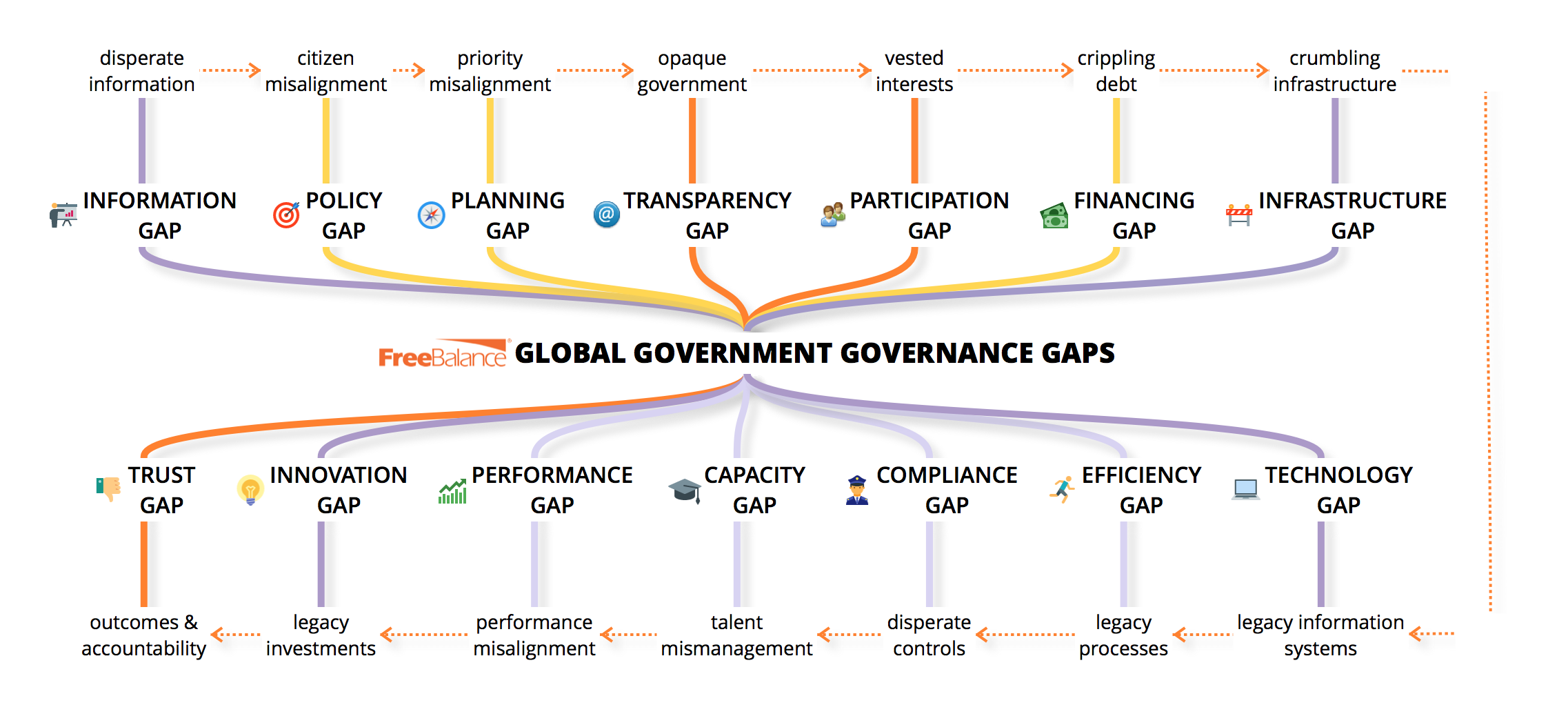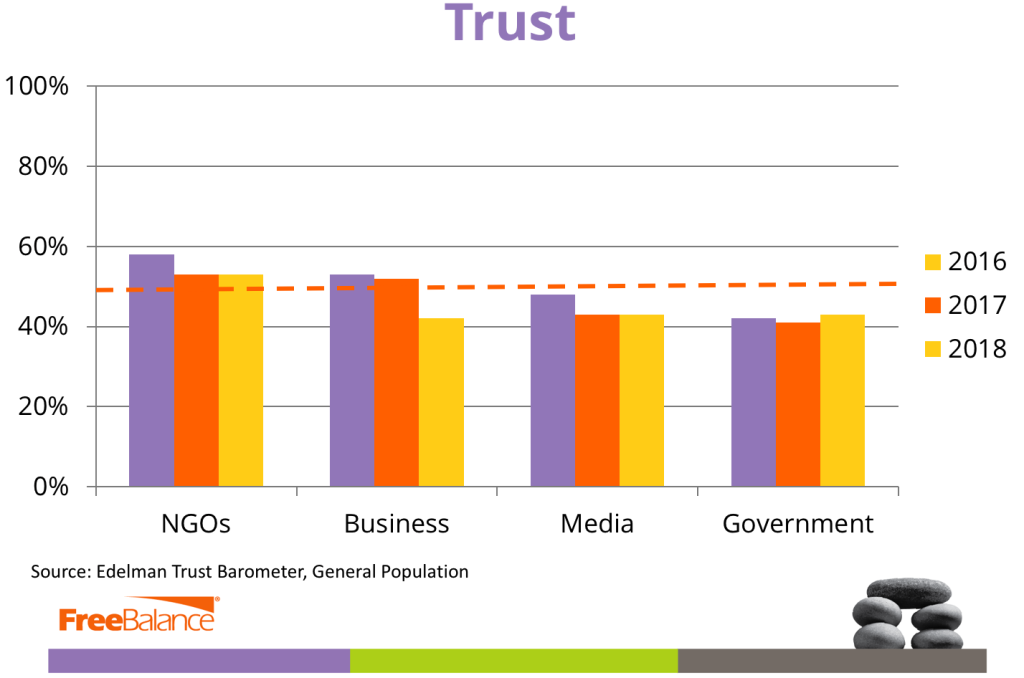Technology as cure-all?
Governments ride the digital bandwagon despite crippling legacy technologies. Cities adopt new technologies to become “smart”. It’s a smart cities technology arms race of high hopes, minimal planning, and limited financing.
Emerging tech giants disrupt tax revenue generation through artificial intelligence, robotics, the sharing and gig economy. Governments seek to leverage technology through antiquated pre-digital processes. This is a gap – a governance gap. Result: gap between promise and reality of government digital transformation.
We’ve examined the governance gap in public investment management and smart government. We’ve found additional digital transformation constraints in government. This comes at a time when digital transformation is not longer optional or “nice to have.”
Understand governance gap before government digital transformation journeys

We see 4 governance gap themes in the 14 governance gaps shown above:
- Technology-related in purple
- Budget-related in yellow
- Participation-related in red
- Services-related in blue
Successful government digital transformation requires a gap analysis. Constraints demonstrate where digital initiatives could be successful. More importantly, gap analysis helps governments to overcome gaps that block the road to success. Gap dependencies are identified.
Your government may have overcome some of these gaps:
- Information Gap: Lack of effective, consistent, coherent, timely, and quality information for decision-makers because of data silos, lack of data collection, with poor information governance and integration, rather than effective unified data
- Policy Gap: Policy is informed by the information gap, so policy reverts to political dogma, or effective unified data is downplayed in favour of dogma because of confirmation bias, rather than policy aligned to citizen priorities, or citizen-centric policy
- Planning Gap: Focus on annual budgets rather than medium term, combined with the information gap and policy gap leads to short-term planning where priorities that are misaligned to citizen concerns, even if understood, and effective unified data, if collected
- Transparency Gap: Lack of fiscal transparency or usability of transparency information even when planning is effective and priorities are aligned to citizen needs
- Participation Gap: Lack of citizen engagement because of limited participation, poor fiscal transparency, and antiquated planning methods that does not tap into citizen, civil society or business capacity to solve problems, identify policy priorities, and audit results, even when governments have unified data and effective planning techniques
- Financing Gap: High debt and limited financing option challenge governments to invest in citizen priorities, especially when previous planning has led to poor outcomes
- Infrastructure Gap: Trillions of dollars of additional infrastructure investments are needed annually to achieve sustainable growth, where the proven economic returns for infrastructure cannot be financed even when there is effective planning
- Technology Gap: Lack of modern integrated information systems in government, with antiquated legacy systems and legacy ERP, leads to the information gap for decision-makers, particularly for measuring policy success, while making fiscal transparency difficult, with high technical debt and maintenance costs that restricts spending for new cost-effective systems
- Efficiency Gap: Antiquated and manual government processes from the pre-digital era, and legacy technology adds friction to government service delivery
- Compliance Gap: Manual processes and legacy technology leads to inadvertent compliance gaps such as overspending procurement or payroll budgets through lack of budget integration, or deliberate compliance breaches such as corrupt practices in procurement and tax collection
- Capacity Gap: Focus on antiquated processes, legacy technology, and the top-down focus of government human resources often leads to public service capacity that falls behind private sector capacity leading to poor planning decisions
- Performance Gap: Legacy technology, complex outcomes, poor capacity, investments, and planning, leads to government performance that does not meet citizen expectations even when citizen priorities are understood
- Innovation Gap: Conservative focus in public investments leads to inefficient complex procurement resulting in legacy technology and infrastructure adoption, and program implementation saddled by poor planning that is not tied to citizen priorities
- Trust Gap: Lack of citizen engagement, public sector corruption, poor transparency and performance erodes trust in government leading to lower credit ratings, poor tax compliance, and increased conflict
Trust is at centre of government digital transformation

The Edelman Trust Barometer demonstrates the increasing distrust of institutions, particularly government. Many government leaders believe that transparency exposes inefficiency, corruption, and poor decisions. These leaders prefer opaque governance.
Government can no longer hide inefficiency or corruption in the digital era. In democratic, autocratic or fragile states.
Transparent governments tap into citizen audit to improve performance, and gain trust. Otherwise, distrust in government grows. That’s why government digital transformation boils down to increasing transparency, engagement, and trust.
